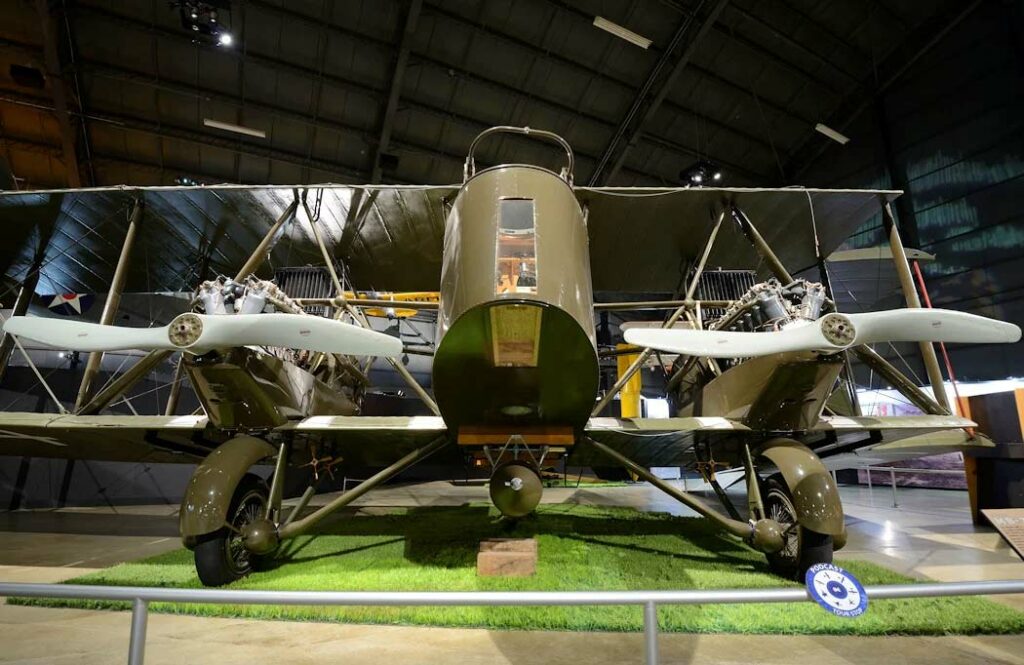Martin MB-1: Pioneering U.S. bomber, twin-engine biplane, known for initiating strategic bombing capability in U.S. aviation post-WWI. The Martin MB-1 was an innovative American bomber aircraft developed in the early 20th century. It marked a significant milestone in U.S. military aviation by introducing a purpose-built design to fulfill a strategic bombing role, differentiating itself from converted reconnaissance or service aircraft.
The Martin MB-1, an early example of a dedicated bomber aircraft, was conceived in a time when the United States was seeking to expand and assert its military aviation capabilities in the aftermath of World War I. This technical article explores the aircraft’s development, design attributes, performance metrics, military use, and its impact on the era’s aviation landscape.
History of the Development of the Martin MB-1
In the wake of World War I, the United States, reflecting on its wartime experiences and the evolving landscape of military aviation, recognized the need for a specialized bomber aircraft. This period saw the transition from makeshift bombers, typically modified reconnaissance or service planes, to aircraft designed explicitly for bombing roles.
The Glenn L. Martin Company, an aviation firm with rising prominence, was contracted to develop this new bomber. The development of the Martin MB-1 commenced with the vision to create a bomber that was reliable, capable of long-range missions, and able to carry a substantial payload. The Glenn L. Martin Company, renowned for their pioneering designs, spearheaded the program, leveraging their experience in aircraft manufacturing.
The maiden flight of the Martin MB-1 occurred on August 17, 1918, signaling a new era in American bomber aviation.
Design of the Martin MB-1
The Martin MB-1 was a large, twin-engine biplane with a conventional layout for its time. It featured a length of 42 feet 5 inches (12.93 meters) and a wingspan of 71 feet 4 inches (21.74 meters). The aircraft’s structure utilized a wood and fabric construction, which was standard for the period.
The bomber was designed with a closed cockpit, a novelty at the time, and could carry a crew of four: a pilot, a co-pilot/navigator, a bombardier, and a rear gunner. Its internal bomb bay had a capacity that was quite substantial for its time, able to carry up to 1,040 pounds (472 kilograms) of ordnance.
Despite being innovative, the MB-1 also had limitations. Its wood and fabric construction could not match the durability of later all-metal designs, and while its closed cockpit was a step forward in crew comfort, it offered limited visibility compared to open designs.

Performance of the Martin MB-1
Powered by two Liberty L-12 engines, each producing 400 horsepower (298 kW), the MB-1 had a top speed of 99 mph (159 km/h), a service ceiling of 10,500 feet (3,200 meters), and a range of 360 miles (580 kilometers). When compared to its contemporaries, such as the British Handley Page O/400 and the German Gotha G.IV, the MB-1’s performance was modest. However, it did represent significant progress for American military aviation, setting the stage for the future of U.S. bomber design.
Military Use and Combat of the Martin MB-1
The Martin MB-1’s primary armament included five .30 caliber machine guns and the aforementioned internal bomb load. While the aircraft was developed towards the end of World War I, it did not see combat during the conflict. However, its presence influenced subsequent designs and strategies concerning the role of airpower in warfare.
The MB-1 was not exported to other countries, and its operational use was limited to the United States. It was eventually replaced by more advanced designs like the Martin MB-2. The MB-1 was significant in that it served as a testbed for new concepts in bomber tactics and operations, contributing to the development of strategic bombing doctrine.
The Martin MB-1 was a significant, though often overlooked, chapter in the evolution of American military aviation. As the first American-designed bomber, it laid the groundwork for a lineage of strategic bombers that would become a central component of U.S. military doctrine. Its development reflected the broader ambitions of the United States to create an independent and effective military aviation capability, an endeavor that would bear fruit in the decades to follow.
Back to the Bombers section.